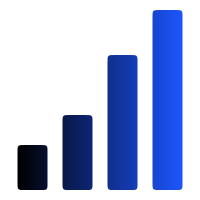Engagement and Retention, Part 3: User Retention Deep Dive - Issue 98
SQL for calculating user retention, how to understand it, measure it, and read different retention graphs
Hello analysts! Today’s topic is a continuation of the User Engagement and Retention series with a focus on User Retention KPI(s) reporting. I’ll talk about how to approach and calculate retention in SQL, how to set retention metrics and KPIs, the difference between retention types, and the impact of retention on user growth.
To recap, user engagement and retention are accelerators of product growth. Any improvement in engagement and retention returns an improvement in acquisition, virality, and monetization. The more insight into user activity you get, the more precisely you can tailor marketing and business strategies. I covered the introduction to each of these in my previous articles:
Today is a deep dive into common Retention metrics, models, and visualizations.
Getting started with retention data
Many analysts are intimidated by retention. The graphs can be difficult to read, the definition varies for each product and business type, and its SQL is complex. Overall, retention is the least understood metric. It’s very difficult to move or change it. It takes a lot, and I mean A LOT, to increase its %.
In my experience, it takes up to 6 months to nail down retention reporting at any company, depending on data health and stack. Additionally, every new executive who comes in pushes for their own definition and reporting format. Therefore, as an analyst, you have to be flexible with your dashboards and data sources to adopt whatever new retention meaning is requested.
What is retention and why is it difficult to move?
Retention is the single most important thing for growth and retention comes from having a great idea and a great product to back up that idea, and great product-market fit. - from Alex Schultz, Lecture 6 - Growth.
To recap, retention measures the ability of your product to keep users active over time. Retention for consumer businesses would have a different meaning than for enterprise, B2C, or B2C companies.
For SaaS, it is the ability of your product to retain paying customers over time. Therefore, the retention formula for SaaS will be:
Customers retained during the period (month) / Customers at the beginning of the period
High SaaS retention is critical for a business, as it directly impacts LTV and CAC. There is another relationship to the retention metric in SaaS - revenue retention. It’s the amount of revenue retained during the current period (month) / revenue at the beginning of the period.
Given that retention includes so many elements of activity, it’s not the right metric to use for weekly reporting or as a baseline for an A/B test. Too often I have seen how product analytics teams evaluate experimentation against retention and wonder why the increase in user activity doesn’t lead to change in retention. Because the activity is only one of the components of retention. Retention (like revenue) is the output metric. You should monitor them, but not strictly utilize them as goals for the testing or campaigning.
Keep reading with a 7-day free trial
Subscribe to Data Analysis Journal to keep reading this post and get 7 days of free access to the full post archives.


